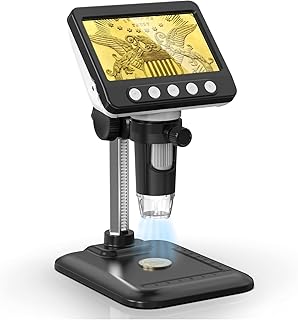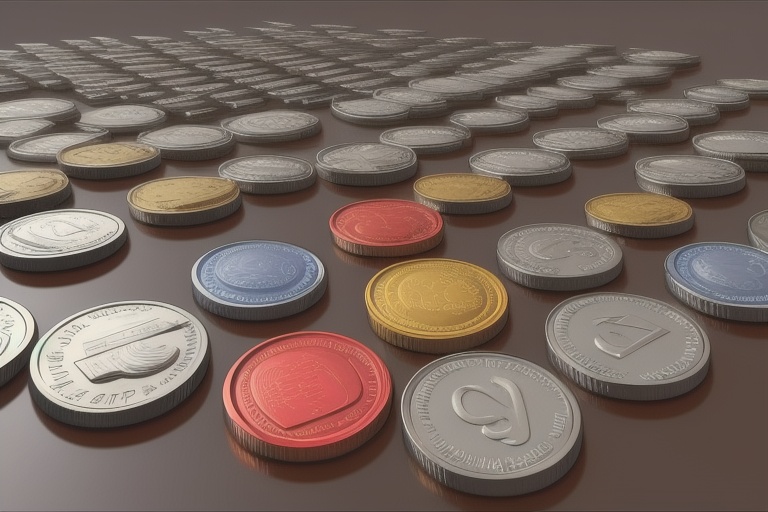Coin collecting, often referred to as numismatics, is not just a hobby but a doorway to the past, an educational pursuit, and in some cases, a financial investment. It's a realm where enthusiasts can indulge in the storied history and exquisite artistry minted into each piece of currency. In this comprehensive exploration of coin values and collecting, we will touch upon the historical roots of this pastime, examine the varied motivations behind it, identify the different collector archetypes, and discuss the implications of coin condition and grading on the value of a collection.
Coin collecting, often referred to as numismatics, is not just a hobby but a doorway to the past, an educational pursuit, and in some cases, a financial investment. It's a realm where enthusiasts can indulge in the storied history and exquisite artistry minted into each piece of currency. In this comprehensive exploration of coin values and collecting, we will touch upon the historical roots of this pastime, examine the varied motivations behind it, identify the different collector archetypes, and discuss the implications of coin condition and grading on the value of a collection.
The Rich Tapestry of Coin Collecting History
The inception of coin collecting can be traced back millennia, to the times when ancient civilizations first started to appreciate more than just the material worth of their coinage. The Romans, for instance, were among the early numismatists, with known figures such as the Emperor Augustus gifting coins with historical significance to his courtiers and friends. This practice flourished and extended into the Middle Ages, Renaissance, and beyond, primarily among the elite echelons of society.
By the Renaissance, notables such as Petrarch were known for their collections, and monarchs across Europe, like Louis XIV of France and various popes, built vast treasuries of coinage that went beyond mere economic utility. The title "Hobby of Kings" aptly encapsulates this era, when coin collecting was synonymous with status and affluence.
As time progressed into the 17th and 18th centuries, the once exclusive pastime saw a democratization. The Enlightenment embraced a methodical collection and study of coins, captivating a burgeoning middle class. This era set the stage for the academic arm of numismatics, imposing order on the previously regal hobby. Subsequently, in the 19th and early 20th centuries, coin collecting would witness an explosion in popularity, fueling the creation of coin shows, associations, and governing entities.
The Motivations Behind Coin Collecting
The impulse to collect coins is as diverse as the collectors themselves. For some, it’s the intrinsic pleasure derived from acquiring a new piece for their collection, enjoying its design, and uncovering the story it encapsulates. This group collects for collecting's sake, often without any financial aim.
Others approach numismatics from an investment angle, viewing coins akin to stocks or real estate, expecting that the rarities they accumulate will appreciate over time. However, investing in coins demands prudence and deep research, as market fluctuations can equally diminish the value of a collection.
A sense of patriotism also serves as a catalyst for collectors. Many a time, countries have minted coins to honor national heroes or commemorate landmark events, and these patriotic pieces stir collectors not just for their monetary worth but for the national pride they evoke.
Diverse Collector Archetypes
The numismatic landscape is dotted with varied collector profiles. Some are generalists, enjoying coins from various eras and regions, while others are specialists, narrowing their focus to specific time periods, like the age of Roman emperors, or categories, such as error coins or currency of a particular metal.
Among specialist collectors was the legendary Louis E. Eliasberg, who achieved the feat of assembling a complete set of U.S. coins by date and mint mark – an unparalleled accomplishment that cemented his place in collecting lore.
Apart from specialists are the hoarders, often guided by the future potential of their coins, especially in terms of bullion value. It is not uncommon for the metal content to be worth more than the face value, beckoning those who are looking at coins through an investment lens.
Then, there are those who find themselves unwitting inheritors of numismatic treasures, becoming accidental collectors. These individuals often gain a newfound fascination for the hobby upon diving into the collections bequeathed to them.
The Pillars of Coin Valuation
At the heart of collecting, beyond the stories and the joy, is the valuation of coins. The ubiquity of coin grading in the 1980s revolutionized the hobby, establishing systems to authenticate and protect the veracity of coin conditions. Prominent grading companies like PCGS and NGC have set benchmarks for preserving collector confidence by reducing the circulation of counterfeit and overgraded coins.
Condition is king when evaluating a coin's worth. Any coin, ranging from those in circulatory wear to others in pristine, uncirculated quality, can undergo grading to ascertain its exact state. Factors like luster, strike, and surface preservation are meticulously assessed to derive the grade which ultimately shapes its value on the market. Despite the seemingly uniform grading standards, some controversy and subjectivity persist, given that a coin's aesthetics – like toning or luster – can sway opinions and warrant varying grades upon resubmission.
The Role of Collector Clubs and Organizations
Coin collector clubs have emerged as crucial forums for numismatists, offering fellowship, education, and resources vital for both novice and veteran collectors. These associations encourage the exchange of expertise, fostering a sense of community and driving the collective passion for coins forward.
Coin collecting, therefore, is not merely an individualistic pursuit. It's a communal experience, a shared journey through history's monetary systems, and a testament to human civilization's artistic achievements encapsulated in small, often overlooked objects of daily commerce.
In sum, coin collecting offers a myriad of narratives to its devotees, from art and history buffs to investors and accidental hobbyists. It's a realm that is both intricate and expansive, calling out to those who wish to delve into its depths. The future segments of this series will dive into more detailed aspects of numismatics, from strategies for building a collection to insights on navigating the coin marketplace. Stay tuned, and may your collecting adventures be rich and rewarding.
Information for this article was gathered from the following source.




